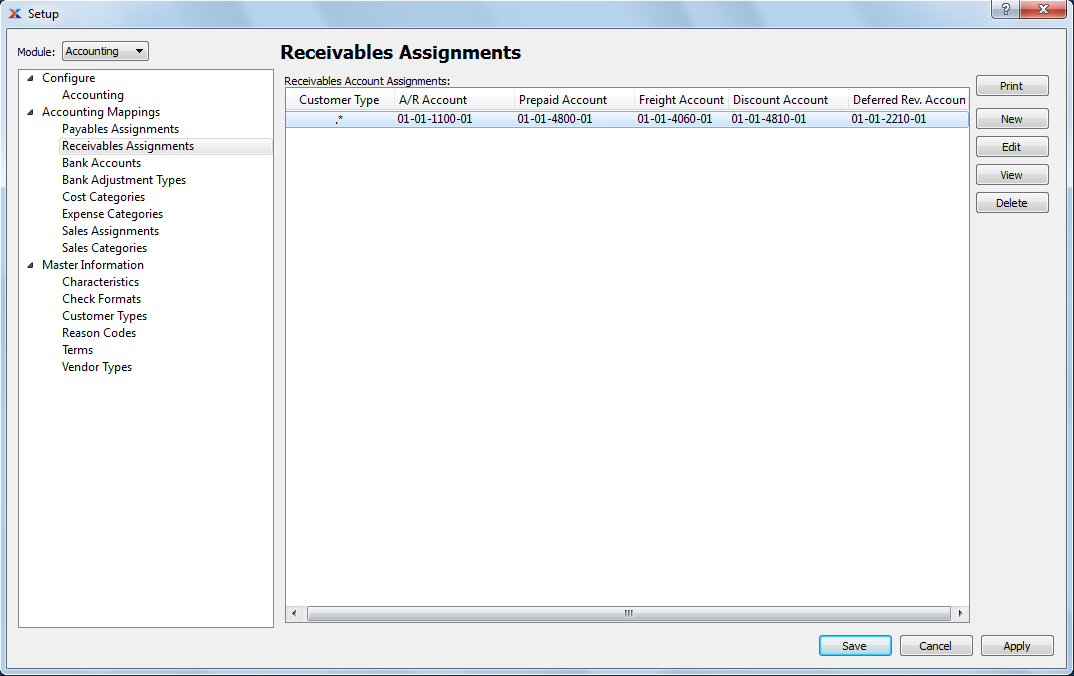
|
xTuple ERP Reference Guide |
Receivables assignments represent the default General Ledger (G/L) Accounts used by the system when processing the following:
Invoices
Cash Receipts
Sales Order Credit Memos
Miscellaneous Receivables Credit Memos
Miscellaneous Receivables Debit Memos
The Account assignments are made by Customer Type. This means that transactions involving a Customer will follow the assignments established for the Customer Type—unless otherwise specified. To access the Receivables assignments master list, select the "Receivables Assignments" option. The following screen will appear:

The "Receivables Assignments" screen displays information on existing Receivables assignments.
To create a new Receivables assignment, select the NEW button. The following screen will appear:

When creating a new Receivables assignment, you are presented with the following options:
By default, the screen will limit your Account Number choices to only those Accounts having the correct Account Type for the chosen context. However, privileged users may override this default behavior by manually entering any Account Number listed in the Chart of Accounts.
Specify the Customer Type you want to associate with the Receivables assignment.
Enter a Customer Type pattern to select a range of Customer Types. Refine your search using Regular Expressions.
Identify a General Ledger (G/L) Account to assign as the default Receivables. This is an Asset Account. For example, it will be debited when Invoices are posted and credited when Cash Receipts are posted.
Identify a General Ledger (G/L) Account to assign as the default Receivables Prepaid Account. This is a Revenue contra Account. It will be debited when Miscellaneous Receivables Credit Memos are posted and credited when Miscellaneous Receivables Debit Memos are posted.
Identify a General Ledger (G/L) Account to assign as the default Freight Account. This is a Revenue Account. It will be credited when Invoices are posted and debited when Sales Order Credit Memos are posted.
Identify a General Ledger (G/L) Account to assign as the default Deferred Revenue Account. This is a Liability Account. It is an optional Account, as systems may be configured to ignore it when handling Customer Deposits. When this Account is used, it will be credited when unapplied Cash Receipts are posted and debited when the Receivables Credit Memos resulting from unapplied Cash Receipts are applied to open Receivables.
You can disable the use of a Deferred Revenue Account for handling Customer Deposits at the system level.
Identify a General Ledger (G/L) Account to assign as the default Receivables Discount Account. This is a Revenue Account. It will be debited when Cash Receipts are posted and the Invoice the Cash Receipt is applied to is still within its discount Terms.